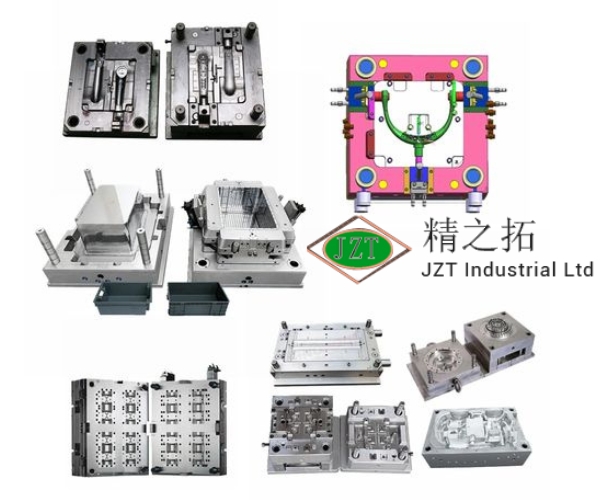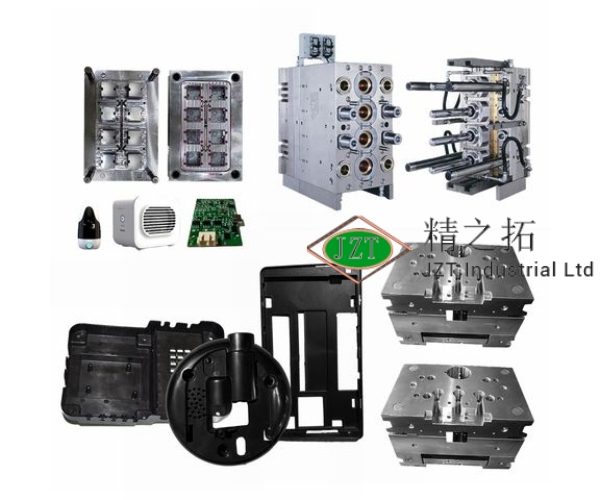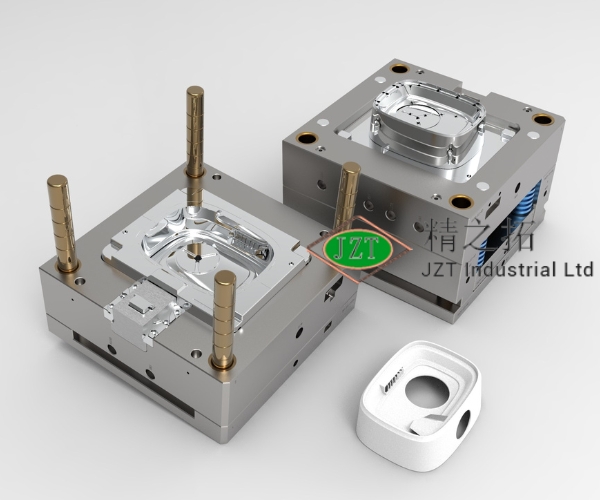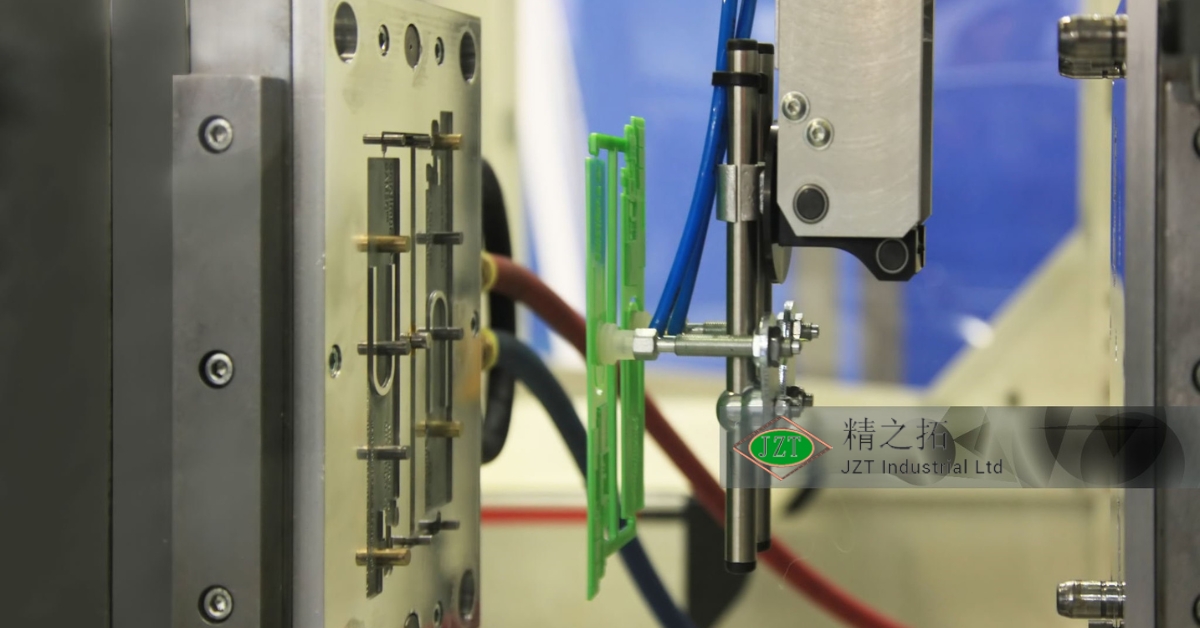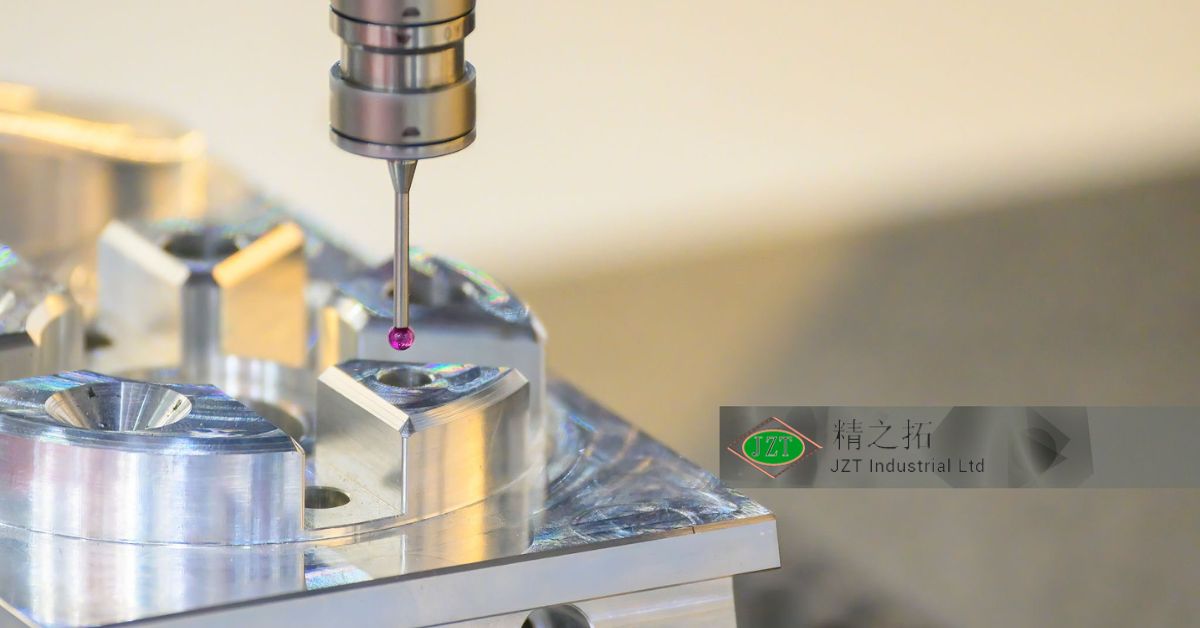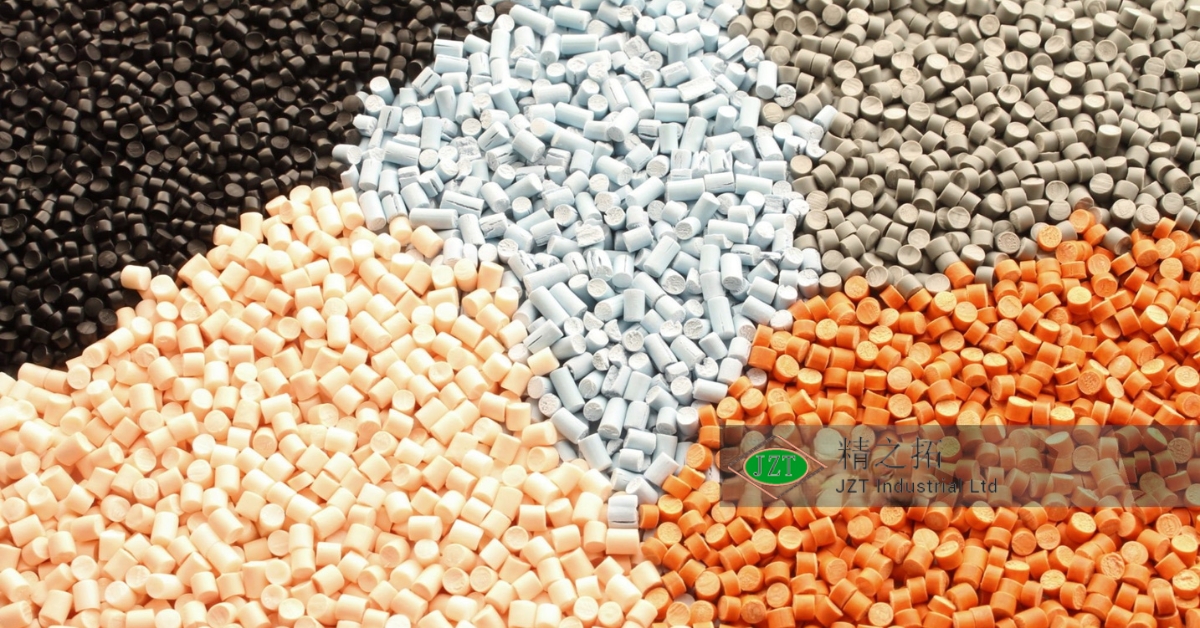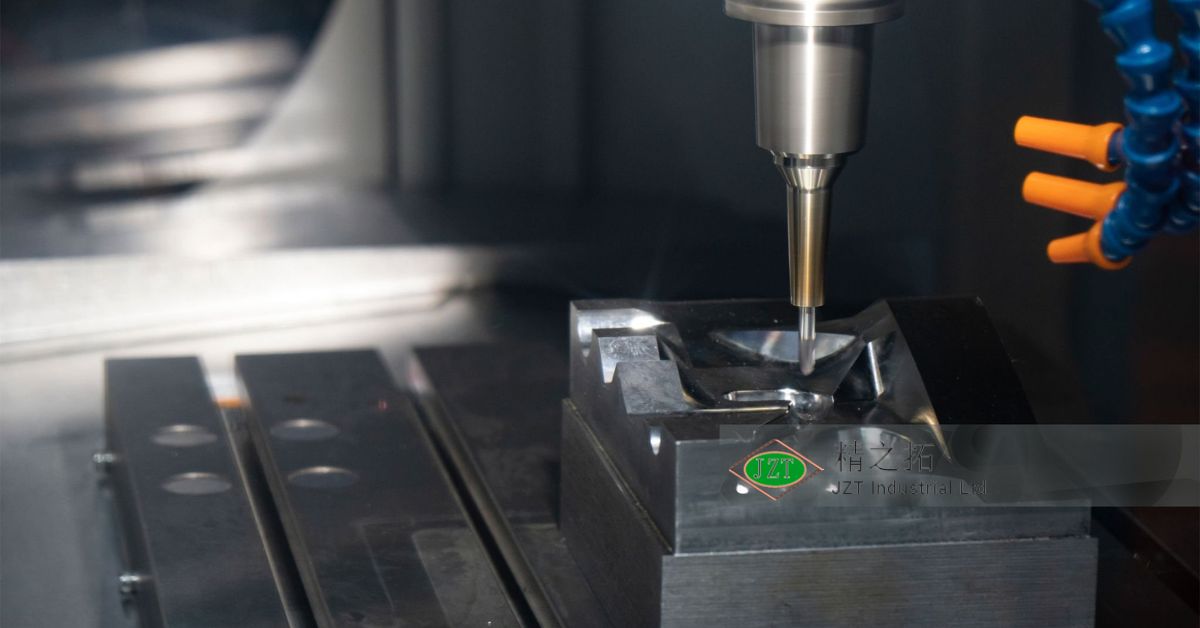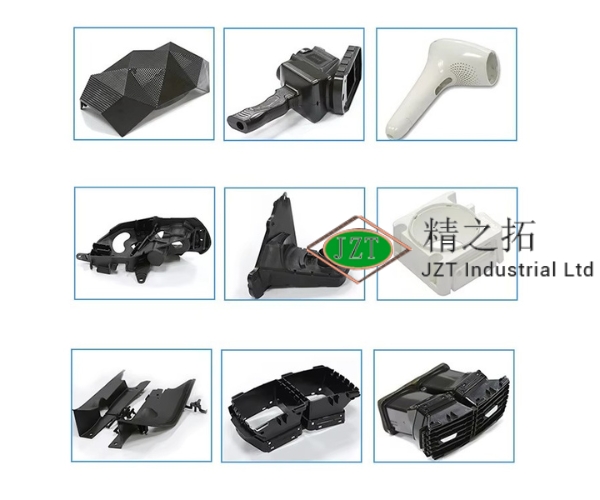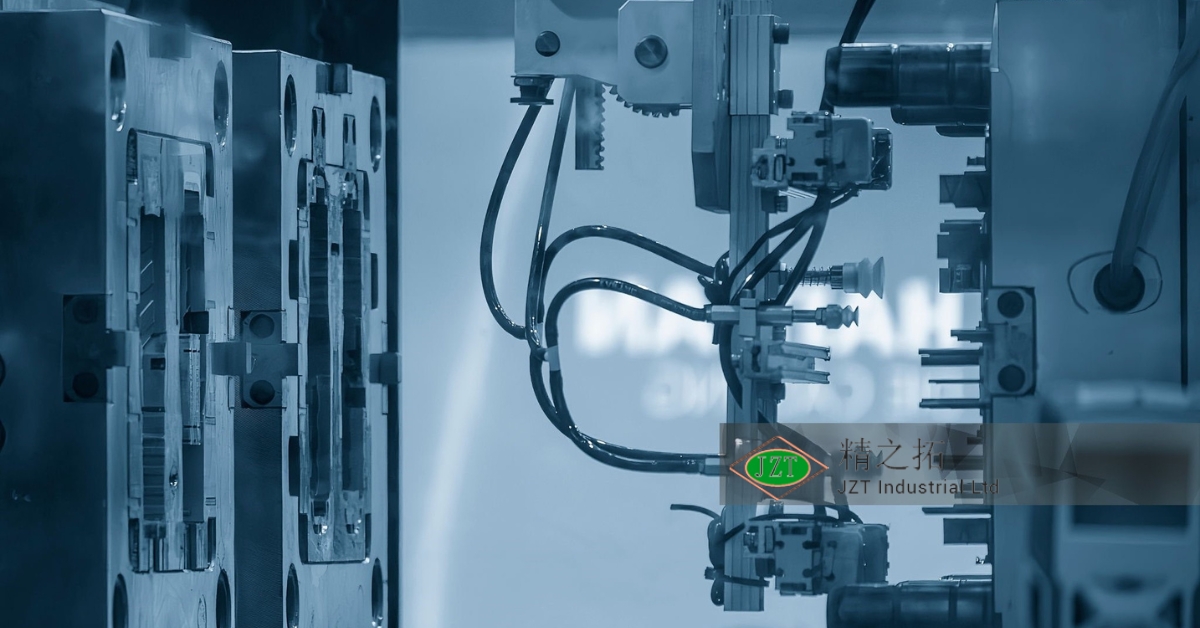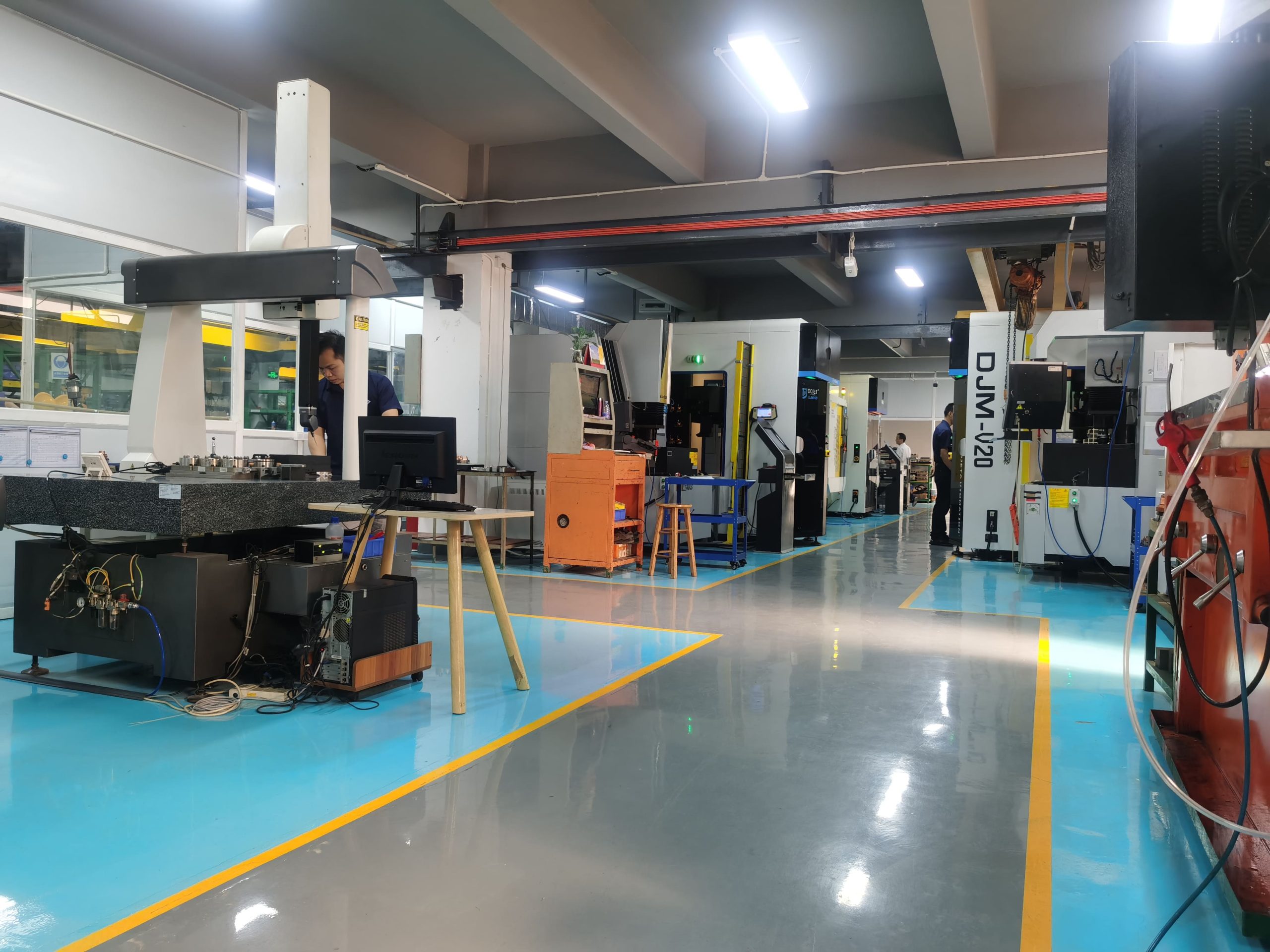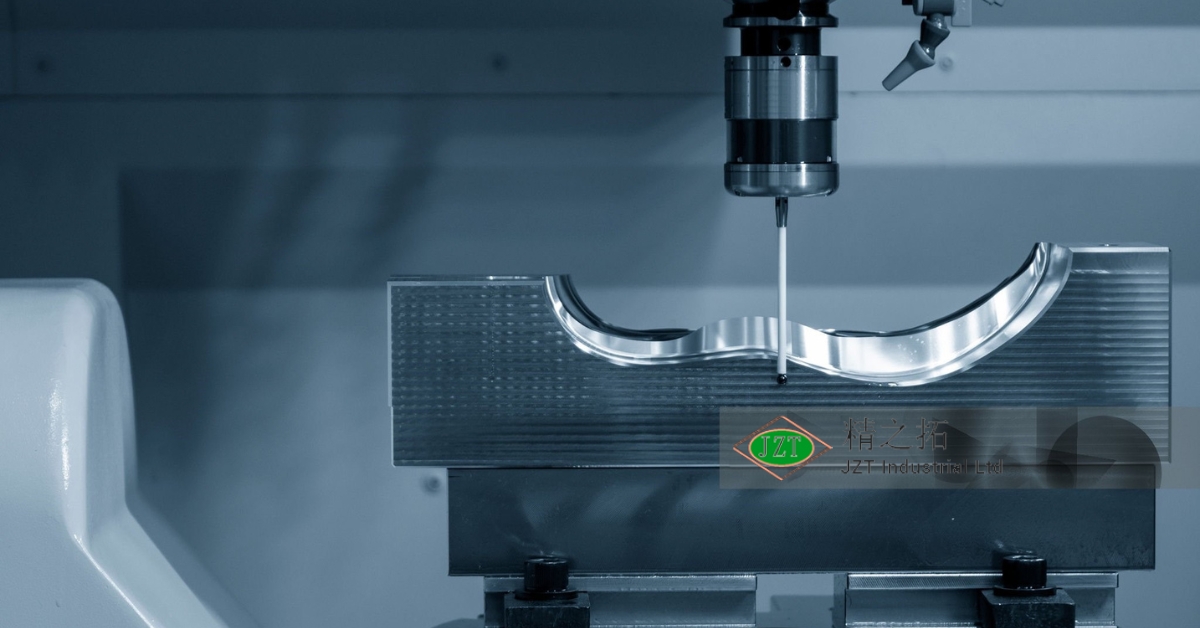Wstęp
In the competitive world of manufacturing, time is of the essence. Bringing products to market faster while maintaining quality has become a key factor for success. For producenci części z tworzyw sztucznych, one of the most powerful tools available to accelerate product development is szybkie prototypowanie. This technology allows businesses to quickly develop and test designs before committing to full-scale production using formy wtryskowe do tworzyw sztucznych.
Rapid prototyping in plastic injection molding has revolutionized the way products are designed, tested, and produced. It provides companies with the flexibility to make design iterations rapidly, reducing time to market and minimizing costly errors. By creating prototypes early in the design process, manufacturers can ensure that the final product meets both functional and aesthetic requirements, leading to higher-quality niestandardowe części plastikowe.
This article will explore how szybkie prototypowanie plays a critical role in formowanie wtryskowe tworzyw sztucznych and how it helps companies accelerate their product development cycles. We will discuss the benefits of rapid prototyping, the different technologies involved, and how this approach is changing the landscape of the manufacturing industry.
Zrozumienie formowania wtryskowego tworzyw sztucznych
Before diving into the role of szybkie prototypowanie, it’s important to understand the basics of formowanie wtryskowe tworzyw sztucznych and why it is such a widely used manufacturing method. Formowanie wtryskowe tworzyw sztucznych is a process in which molten plastic is injected into a mold to form a specific shape. Once cooled, the plastic solidifies into the desired part.
The process of formowanie wtryskowe tworzyw sztucznych involves several key steps:
- Designing the Mold: The mold must be designed with extreme precision to ensure that the final plastic part meets the required specifications.
- Zastrzyk: Molten plastic is injected into the mold cavity at high pressure.
- Chłodzenie: The plastic cools and solidifies within the mold, taking on the shape of the cavity.
- Wyrzucanie: Once cooled, the mold opens, and the newly formed plastic part is ejected.
- Inspection and Quality Control: The part is checked to ensure it meets quality standards.
The accuracy of the formy wtryskowe do tworzyw sztucznych used in this process is critical. Even the slightest imperfection in the mold can lead to defective parts, which is why manufacturers invest significant resources in designing and testing molds. This is where rapid prototyping in plastic injection molding becomes a game-changer, allowing for testing and validation before the costly production phase begins.
What is Rapid Prototyping?
Szybkie prototypowanie is a technique used to quickly fabricate a physical model or prototype of a design using three-dimensional computer-aided design (CAD) data. This process allows designers and engineers to create models that can be tested for form, fit, and function without having to produce a full-scale production mold.
The key feature of szybkie prototypowanie is its speed. Unlike traditional prototyping methods, which can take weeks or even months, rapid prototyping can produce models in a matter of hours or days. This is particularly useful in industries like automotive, aerospace, electronics, and medical devices, where product development cycles are continuously being shortened to meet market demands.
Several types of technologies are used in szybkie prototypowanie, each offering unique benefits depending on the specific requirements of the prototype:
- Stereolithography (SLA): One of the oldest and most widely used techniques, SLA uses a laser to cure layers of resin to form a 3D object.
- Selective Laser Sintering (SLS): In this process, a laser fuses powdered material to create a solid part. It’s ideal for functional prototypes that require durability.
- Fused Deposition Modeling (FDM): This technology extrudes thermoplastic filaments layer by layer to build a prototype. It’s often used for low-cost, rapid prototyping.
- Obróbka CNC: This subtractive process involves cutting material from a solid block to form the prototype. It’s ideal for high-precision, functional parts.
- PolyJet Printing: Known for its high resolution, PolyJet can produce complex geometries with fine details, making it suitable for visual prototypes.
The primary advantages of szybkie prototypowanie include the ability to quickly iterate designs, reduce the time required to bring products to market, and lower the risk of design errors that can occur during mass production.
The Intersection of Rapid Prototyping and Plastic Injection Molding
Rapid prototyping in plastic injection molding is an essential step in ensuring that the final production process is smooth and free from errors. The ability to create a prototype allows manufacturers to test the design, materials, and functionality of a product before moving forward with full-scale production. This is particularly important in formowanie wtryskowe tworzyw sztucznych, where once a mold is created, making changes can be time-consuming and expensive.
Why Use Rapid Prototyping Before Plastic Injection Molding?
One of the most significant benefits of szybkie prototypowanie is that it helps to refine designs before committing to the production of formy wtryskowe do tworzyw sztucznych. By creating a physical prototype, manufacturers can test how well the design meets its functional requirements, check for potential flaws, and gather feedback from stakeholders. This stage allows for design improvements without the risk of costly errors once the final mold has been created.
For companies producing niestandardowe części plastikowe, rapid prototyping ensures that the part will function as intended, whether it’s an automotive component, a medical device, or an intricate electronic housing. In many cases, the prototype may also reveal unexpected issues with the part’s geometry or material selection, which can then be addressed before full production begins.
Reducing Time to Market
In today’s fast-paced business environment, companies are constantly looking for ways to shorten product development timelines. Rapid prototyping in plastic injection molding plays a crucial role in speeding up the process, as it allows for the testing of design iterations in real-time. By identifying and resolving issues early in the design process, manufacturers can significantly reduce the time it takes to bring a product to market.
This advantage is particularly important for industries with short product life cycles or those that are highly competitive. For instance, the consumer electronics industry constantly requires new and innovative designs, and rapid prototyping allows companies to stay ahead of the curve by iterating and refining products quickly.
From Prototype to Production
The transition from a rapid prototype to the production phase using formy wtryskowe do tworzyw sztucznych is a critical step in product development. Once the prototype has been tested and validated, the data gathered from the testing phase can be used to create the final production mold. This ensures that the mold is optimized for mass production and that any potential issues have already been addressed.
One of the key benefits of this approach is that it minimizes the risk of expensive changes during the production phase. Since formy wtryskowe do tworzyw sztucznych are expensive to produce, especially for complex or large-scale products, rapid prototyping helps ensure that the mold is designed correctly from the start.
Testing for Fit, Form, and Function
Prototypes created using szybkie prototypowanie are invaluable for testing a part’s fit, form, and function. This testing ensures that the part will fit within an assembly, perform as expected, and meet the necessary specifications for the intended application. Without this crucial step, companies risk producing molds that create parts with flaws, leading to production delays and increased costs.
For manufacturers of niestandardowe części plastikowe, this validation phase is essential. Whether the part is a complex automotive component or a simple consumer product, ensuring that the prototype functions properly reduces the likelihood of costly production issues down the line.
Validating Mold Design
The success of a forma wtryskowa do tworzyw sztucznych depends largely on the quality of its design. A poorly designed mold can lead to issues such as warping, shrinkage, or inconsistent part quality. By using szybkie prototypowanie, manufacturers can validate the mold design early in the process, ensuring that it will produce parts that meet the required specifications.
In some cases, rapid prototyping can reveal design flaws that may not have been apparent during the CAD design phase. This allows manufacturers to make adjustments to the mold design before committing to full-scale production, saving time and money in the long run.
Advantages of Rapid Prototyping in Plastic Injection Molding
The benefits of szybkie prototypowanie in the context of formowanie wtryskowe tworzyw sztucznych are vast, and these advantages directly contribute to improving the efficiency, cost-effectiveness, and quality of the final product.
Faster Design Iterations
With szybkie prototypowanie, manufacturers can quickly produce multiple iterations of a design in a short period of time. This ability to test and refine designs in real-time is particularly valuable in formowanie wtryskowe tworzyw sztucznych, where design changes can otherwise be costly and time-consuming. Instead of waiting weeks for a prototype to be produced using traditional methods, szybkie prototypowanie allows for immediate feedback and rapid adjustments to the design.
Dla producenci części z tworzyw sztucznych, this accelerated iteration process enables them to create and test multiple design variations to find the optimal solution. This not only speeds up the development process but also leads to higher-quality parts, as each iteration can be tested for improvements in fit, form, and function.
Cost Savings in Early Stages
One of the most significant advantages of rapid prototyping in plastic injection molding is the cost savings it provides in the early stages of product development. By catching design flaws early on, manufacturers can avoid the high costs associated with producing defective parts or reworking molds. Additionally, because prototypes can be produced quickly and at a lower cost than full-scale production molds, manufacturers can experiment with different designs without incurring significant expenses.
For companies producing niestandardowe części plastikowe, the ability to make changes during the prototyping phase helps prevent costly errors later in the production process. This is especially important for industries such as automotive or aerospace, where even minor defects can lead to significant performance issues or safety concerns.
Improved Product Accuracy
Szybkie prototypowanie allows manufacturers to ensure that their designs are accurate before committing to the production of formy wtryskowe do tworzyw sztucznych. By creating functional prototypes, companies can test how well the part will perform under real-world conditions and make any necessary adjustments to the design. This level of accuracy is critical in industries that demand high levels of precision, such as medical devices or electronics, where even the smallest design flaw can have serious consequences.
Dla producenci części z tworzyw sztucznych, this improved accuracy means that the final product will meet the exact specifications required for its intended use. Whether it’s a complex automotive component or a simple consumer product, ensuring that the part functions as intended before mass production reduces the risk of defects and costly recalls.
Customization and Flexibility
One of the unique advantages of szybkie prototypowanie is the flexibility it offers in terms of customization. Części plastikowe na zamówienie can be designed, tested, and refined quickly, allowing manufacturers to create highly personalized products that meet specific customer needs. This level of customization is particularly valuable in industries like medical devices or consumer electronics, where products often need to be tailored to individual requirements.
Za pomocą szybkie prototypowanie, companies can explore different design options, test various materials, and experiment with different manufacturing processes. This flexibility not only leads to better products but also enables manufacturers to respond more effectively to changing market demands.
Real-World Testing
Creating functional prototypes through szybkie prototypowanie allows manufacturers to conduct real-world testing of their products before moving to full-scale production. By subjecting the prototype to the same conditions it will face in its intended environment, manufacturers can identify potential issues and make necessary adjustments to the design.
For example, in the automotive industry, prototypes can be tested for durability, strength, and performance under various conditions, such as extreme temperatures or mechanical stress. This level of testing helps ensure that the final product will perform as expected, reducing the risk of failure once the product is in use.
Feedback Integration
One of the most important aspects of szybkie prototypowanie is the ability to gather feedback from stakeholders early in the design process. Whether it’s feedback from customers, engineers, or production teams, szybkie prototypowanie allows manufacturers to incorporate input from all parties involved, leading to better overall product designs.
By involving stakeholders early in the development process, manufacturers can address potential issues before they become costly problems during full-scale production. This collaborative approach not only leads to better products but also helps ensure that the final design meets the needs and expectations of everyone involved.
Types of Prototypes Used in Plastic Injection Molding
W formowanie wtryskowe tworzyw sztucznych, several types of prototypes are used during the development phase to test various aspects of a product. Each type serves a specific purpose, from assessing visual appeal to validating functionality, and helps manufacturers ensure that their niestandardowe części plastikowe meet all necessary requirements before entering mass production.
Visual Prototypes
Visual prototypes are primarily used to evaluate the appearance of a product. They allow designers and stakeholders to assess the overall look and feel of a part, ensuring it aligns with branding, design aesthetics, and consumer expectations. These prototypes do not need to be fully functional or made from the final materials, but they provide a clear representation of the product’s shape, color, and surface texture.
Dla producenci części z tworzyw sztucznych, visual prototypes are particularly useful in industries such as consumer electronics and automotive interiors, where the design and aesthetic quality of parts are critical to product success. Rapid prototyping technologies, takie jak SLA I PolyJet printing, are commonly used to produce these prototypes quickly and cost-effectively.
Functional Prototypes
Functional prototypes take the process a step further by testing how a part performs under operational conditions. These prototypes are designed to replicate the actual performance of the final product, making them essential for validating the part’s mechanical properties, pasować, I trwałość. Functional prototypes are often made from materials similar to those used in the final production part, allowing for more accurate testing.
W formowanie wtryskowe tworzyw sztucznych, functional prototypes are invaluable for industries such as automotive and medical devices, where performance and reliability are non-negotiable. By creating a functional prototype, manufacturers can test factors like strength, flexibility, and resistance to environmental factors, ensuring that the part will perform as expected once mass-produced.
Working Prototypes
Working prototypes are similar to functional prototypes but are used when a near-final version of the product is needed for testing or demonstration purposes. These prototypes closely resemble the final product, both in appearance and performance. They are often used for field testing or to present to potential customers or investors, providing a realistic representation of what the finished product will look and feel like.
Dla niestandardowe części plastikowe, working prototypes are often created using Obróbka CNC Lub SLS, as these methods allow for high levels of detail and precision. Working prototypes can help manufacturers make final adjustments to their designs before committing to the production of formy wtryskowe do tworzyw sztucznych.
Pre-Production Prototypes
Pre-production prototypes are the final stage of prototyping before full-scale production begins. These prototypes are made using the same materials and processes that will be used for the final product, making them as close to the production part as possible. Pre-production prototypes are used to ensure that all aspects of the product, from design to functionality to manufacturability, are optimized before mass production.
W formowanie wtryskowe tworzyw sztucznych process, pre-production prototypes are critical for validating the design of the mold itself. By producing a small batch of parts using the production mold, manufacturers can test for any issues with the mold design, such as shrinkage or warping, and make necessary adjustments before large-scale production begins.
Case Study Example: Iterative Prototyping for Product Refinement
To illustrate the importance of different prototype stages, consider the case of a medical device manufacturer developing a new surgical instrument. The company began by creating a visual prototype to refine the ergonomic design and ensure that the instrument would be easy for surgeons to handle. After gathering feedback from potential users, they created a functional prototype to test the mechanical performance of the instrument in a surgical setting.
Following several iterations, the company produced a working prototype that closely resembled the final product and conducted clinical trials to ensure the instrument met all safety and performance standards. Finally, they developed a pre-production prototype using the final formy wtryskowe do tworzyw sztucznych, allowing them to validate the mold design and ensure consistent quality in mass production. This iterative prototyping process helped the company bring a safe, effective product to market quickly and efficiently.
Challenges in Rapid Prototyping for Plastic Injection Molding
While szybkie prototypowanie offers numerous advantages, it also comes with its own set of challenges, particularly when applied to formowanie wtryskowe tworzyw sztucznych. These challenges must be carefully managed to ensure that prototypes accurately represent the final product and that the transition to mass production is smooth.
Material Differences
One of the main challenges in szybkie prototypowanie is the difference between prototype materials and the final materials used in formowanie wtryskowe tworzyw sztucznych. Many prototyping technologies, such as SLA I FDM, use materials that mimic the properties of production plastics but may not have the same strength, flexibility, or durability. This can make it difficult to predict how the final part will behave under real-world conditions.
Dla producenci części z tworzyw sztucznych, it is essential to account for these material differences during the prototyping phase. While szybkie prototypowanie allows for quick design iterations, manufacturers must ensure that the final materials chosen for the formy wtryskowe do tworzyw sztucznych will meet the necessary performance requirements for the end product.
Tolerances and Accuracy
Another challenge in szybkie prototypowanie is achieving the same level of tolerances I dokładność as the final production part. Prototypes, especially those made using Drukowanie 3D technologies, may not have the same level of precision as parts produced through formowanie wtryskowe tworzyw sztucznych. This can lead to discrepancies between the prototype and the final product, particularly for parts that require tight tolerances.
For manufacturers, it’s crucial to use Obróbka CNC or other high-precision prototyping methods when testing parts that need to meet exact specifications. This ensures that any issues related to tolerances can be addressed before the formy wtryskowe do tworzyw sztucznych are created, reducing the risk of defects during mass production.
Scaling from Prototype to Mass Production
Moving from a prototyp to full-scale production using formy wtryskowe do tworzyw sztucznych can present challenges related to scalability. While a prototype may function perfectly in small batches, mass production often introduces additional variables, such as mold wear, material inconsistencies, and cooling rates, that can affect the quality of the final parts.
Manufacturers need to carefully plan the transition from prototyping to production, ensuring that the formy wtryskowe do tworzyw sztucznych are designed to handle the demands of large-scale manufacturing. This may involve conducting additional testing with pre-production prototypes or making adjustments to the mold design to account for potential issues during mass production.
Cost vs. Quality Balance
While szybkie prototypowanie is generally more cost-effective than traditional prototyping methods, there is still a balance to be struck between koszt I jakość. Depending on the technology used, some prototypes may lack the durability or precision required for accurate testing, leading to higher costs if additional iterations are needed.
For companies producing niestandardowe części plastikowe, it’s important to choose the right prototyping method based on the specific requirements of the project. In some cases, investing in higher-quality prototypes, such as those produced using Obróbka CNC, can save time and money in the long run by reducing the risk of errors during the production phase.
Złożoność projektu
Highly complex designs can be challenging to prototype effectively, especially if the design includes intricate geometries or requires multiple materials. Some szybkie prototypowanie technologies, such as SLA Lub PolyJet, may struggle to accurately reproduce these features, leading to prototypes that do not fully represent the final product.
Dla producenci części z tworzyw sztucznych, overcoming this challenge requires careful planning and the use of advanced prototyping techniques. In some cases, it may be necessary to combine multiple prototyping methods or use Obróbka CNC to achieve the required level of detail and precision for complex designs.
The Impact of Rapid Prototyping on Product Development Timelines
One of the most significant advantages of szybkie prototypowanie is its ability to compress product development timelines, allowing manufacturers to bring products to market faster. By enabling quick design iterations and reducing the time needed for testing and validation, szybkie prototypowanie plays a crucial role in accelerating the overall development process.
Shortening Development Cycles
In traditional manufacturing, creating a prototype could take weeks or even months, depending on the complexity of the design and the manufacturing method used. With szybkie prototypowanie, this timeline is reduced to days or hours, allowing companies to iterate on designs much more quickly. This shortened development cycle is especially important in industries with fast-paced product life cycles, such as consumer electronics and fashion, where time-to-market is a critical factor for success.
Dla formowanie wtryskowe tworzyw sztucznych, szybkie prototypowanie can significantly reduce the time required to develop niestandardowe części plastikowe by allowing for rapid testing and validation of molds and part designs. This means that manufacturers can move from concept to production in a fraction of the time it would take using traditional methods, giving them a competitive edge in the market.
Speeding Up Decision Making
The ability to produce prototypes quickly helps teams make faster, more informed decisions during the product development process. Instead of relying solely on digital models or simulations, stakeholders can see and interact with physical prototypes, making it easier to evaluate the design and identify any necessary changes.
By providing a tangible representation of the final product, szybkie prototypowanie helps to streamline the decision-making process, enabling teams to move forward with confidence. This is particularly beneficial for large projects involving multiple stakeholders, such as automotive or aerospace components, where design decisions can have a significant impact on the overall development timeline.
Iterative Development
Iterative development is a key principle in modern product design, allowing manufacturers to continuously refine and improve their designs through multiple rounds of testing and feedback. Szybkie prototypowanie is perfectly suited to this approach, as it enables companies to quickly produce new prototypes and test different design variations in real-time.
W formowanie wtryskowe tworzyw sztucznych, iterative development helps manufacturers fine-tune their mold designs, ensuring that the final niestandardowe części plastikowe meet all necessary specifications. This process not only leads to higher-quality parts but also helps to minimize the risk of defects during mass production, as any issues can be identified and addressed during the prototyping phase.
Reducing Risks
One of the main benefits of szybkie prototypowanie is its ability to reduce risks during the product development process. By identifying potential design flaws early on, manufacturers can avoid costly mistakes that could delay production or result in defective parts. This is particularly important in industries with strict regulatory requirements, such as medical devices or aerospace, where product failures can have serious consequences.
Dla producenci części z tworzyw sztucznych, the ability to test prototypes under real-world conditions provides valuable insights into how the final product will perform, allowing them to make necessary adjustments before committing to full-scale production. This reduces the likelihood of costly rework or recalls, ensuring that the product meets all performance and safety standards.
How Rapid Prototyping is Changing the Plastic Injection Molding Industry
Wzrost szybkie prototypowanie has had a profound impact on the formowanie wtryskowe tworzyw sztucznych industry, transforming the way products are designed, tested, and produced. From enabling faster innovation to improving the precision of molds, szybkie prototypowanie is driving significant changes across the manufacturing landscape.
Adoption of Digital Manufacturing
One of the most notable changes brought about by szybkie prototypowanie is the increased adoption of digital manufacturing techniques. Traditional manufacturing methods, such as manual mold making, are being replaced by digital processes that rely on CAD models, Drukowanie 3D, I Obróbka CNC to create prototypes and molds with greater accuracy and efficiency.
This shift towards digital manufacturing has streamlined the formowanie wtryskowe tworzyw sztucznych process, allowing manufacturers to create more complex and precise molds in less time. It has also opened up new possibilities for niestandardowe części plastikowe, enabling companies to produce highly personalized products that meet the specific needs of their customers.
Impact on Innovation
By reducing the time and cost associated with product development, szybkie prototypowanie has created an environment where innovation can thrive. Manufacturers are now able to experiment with new designs and materials, test different manufacturing processes, and iterate on their ideas in real-time, all without the need for costly investments in tooling or production equipment.
Dla producenci części z tworzyw sztucznych, this increased flexibility has led to the development of more innovative products, from complex automotive components to cutting-edge medical devices. Szybkie prototypowanie has also helped to democratize innovation, making it easier for smaller companies and startups to bring new products to market quickly and cost-effectively.
Creating More Complex Molds
As szybkie prototypowanie technologies have advanced, so too has the ability to create more złożone formy for formowanie wtryskowe tworzyw sztucznych. In the past, intricate designs or multi-part molds could be challenging to produce using traditional manufacturing methods. Today, szybkie prototypowanie allows manufacturers to create detailed and precise molds with ease, enabling them to produce parts with complex geometries that would have been difficult or impossible to achieve in the past.
This has opened up new opportunities for niestandardowe części plastikowe in industries such as aerospace, where lightweight, highly detailed components are essential for improving performance and reducing fuel consumption.
Environmental Impact
Wzrost szybkie prototypowanie has also had a positive impact on the environment, as it allows manufacturers to reduce waste during the formowanie wtryskowe tworzyw sztucznych process. By creating accurate prototypes and testing designs before moving to full-scale production, manufacturers can avoid the need for multiple iterations of molds, reducing material waste and energy consumption.
Additionally, many szybkie prototypowanie technologies, such as Drukowanie 3D, use less material than traditional manufacturing methods, further contributing to the overall reduction in waste. As sustainability becomes an increasingly important consideration for manufacturers, the ability to produce environmentally friendly prototypes will play a key role in the future of formowanie wtryskowe tworzyw sztucznych.
Tools and Technologies Used in Rapid Prototyping for Injection Molding
The success of rapid prototyping in plastic injection molding depends on the tools and technologies used to create accurate and functional prototypes. These technologies have evolved significantly in recent years, offering manufacturers new ways to streamline the prototyping process and improve the quality of their designs.
3D Printing
Drukowanie 3D is one of the most widely used technologies in szybkie prototypowanie, allowing manufacturers to quickly produce prototypes with complex geometries and fine details. Drukowanie 3D technologies, such as SLA, SLS, I FDM, are ideal for creating both visual and functional prototypes, enabling manufacturers to test designs for fit, form, and function.
Dla producenci części z tworzyw sztucznych, Drukowanie 3D offers several advantages, including faster production times, lower costs, and the ability to create prototypes with intricate designs that would be difficult to achieve using traditional methods. Additionally, Drukowanie 3D allows for the creation of niestandardowe części plastikowe, enabling manufacturers to produce highly personalized products for their customers.
Obróbka CNC
Obróbka CNC is another important tool in szybkie prototypowanie, particularly when high levels of precision and accuracy are required. Unlike Drukowanie 3D, which is an additive process, Obróbka CNC is subtractive, meaning that material is removed from a solid block to create the prototype.
Dla formowanie wtryskowe tworzyw sztucznych, Obróbka CNC is often used to create functional prototypes that closely resemble the final product in terms of both appearance and performance. This makes it an ideal choice for industries such as automotive and aerospace, where parts must meet strict tolerances and performance requirements.
Software Solutions
Rozwój CAD I CAM software has played a crucial role in the success of szybkie prototypowanie. These software solutions allow designers and engineers to create detailed digital models of their products, which can then be used to generate prototypes using Drukowanie 3D, Obróbka CNC, or other prototyping technologies.
Dla producenci części z tworzyw sztucznych, software solutions such as SolidWorks, AutoCAD, I CATIA provide the tools needed to design complex parts, optimize mold designs, and simulate the manufacturing process before physical prototypes are created. This helps to ensure that the final product meets all necessary specifications and reduces the risk of errors during the production phase.
Simulation and Virtual Prototyping
In addition to physical prototypes, virtual prototyping I simulation tools have become increasingly important in the development of formy wtryskowe do tworzyw sztucznych. These tools allow manufacturers to simulate the behavior of a product under various conditions, such as temperature changes, mechanical stress, or fluid flow, without the need for a physical prototype.
Dla formowanie wtryskowe tworzyw sztucznych, simulation tools are particularly valuable for optimizing the mold design and ensuring that the final product will meet performance requirements. By using virtual prototyping to test different design variations, manufacturers can identify potential issues early in the development process and make necessary adjustments before creating physical prototypes.
Case Studies: Success Stories Using Rapid Prototyping in Plastic Injection Molding
The benefits of szybkie prototypowanie in formowanie wtryskowe tworzyw sztucznych are best illustrated through real-world examples of how companies have used this technology to improve their product development processes and bring new products to market faster.
Case Study 1: Reducing Product Development Time in Medical Devices
A global medical device company used szybkie prototypowanie to develop a new surgical instrument that required a high degree of precision and functionality. By creating functional prototypes używając SLS I Obróbka CNC, the company was able to test the instrument’s performance under real surgical conditions.
Through multiple iterations, the company refined the design and produced a pre-production prototype using the final formy wtryskowe do tworzyw sztucznych. This process helped the company reduce product development time by 30% and bring the product to market ahead of schedule.
Case Study 2: Improving Design Through Iteration in Consumer Electronics
A leading consumer electronics manufacturer used szybkie prototypowanie to develop a new smartphone case with complex geometry and intricate detailing. By producing visual prototypes używając SLA, the company was able to gather feedback from stakeholders and make necessary adjustments to the design.
After several rounds of iterative prototyping, the company created a working prototype używając Obróbka CNC to test the case’s durability and fit. This process enabled the company to bring a high-quality product to market quickly, while also ensuring that the final design met all performance and aesthetic requirements.
Case Study 3: Preventing Costly Rework in Automotive Manufacturing
An automotive manufacturer used szybkie prototypowanie to validate the design of a complex forma wtryskowa do tworzyw sztucznych for a new engine component. By creating a pre-production prototype, the company was able to identify and address potential issues with the mold design, such as warping and shrinkage, before committing to mass production.
This proactive approach saved the company significant time and money by preventing costly rework during the production phase. The pre-production prototype also helped the company ensure that the final parts met all safety and performance standards, reducing the risk of product failures in the field.
Common Misconceptions About Rapid Prototyping in Plastic Injection Molding
Despite its many advantages, there are several common misconceptions about szybkie prototypowanie that may prevent some companies from fully embracing the technology.
Myth 1: Rapid Prototyping is Only for Small Companies
One of the most prevalent myths about szybkie prototypowanie is that it is only useful for small companies or startups. In reality, szybkie prototypowanie is widely used by companies of all sizes, including large multinational corporations in industries such as automotive, aerospace, and consumer electronics. The ability to quickly iterate on designs and test prototypes is invaluable for any company looking to bring high-quality products to market faster.
Myth 2: Prototyping is Too Expensive for Large Projects
Another common misconception is that szybkie prototypowanie is too expensive for large-scale projects. While it’s true that some prototyping technologies can be costly, the long-term savings far outweigh the initial investment. By identifying and addressing design flaws early in the development process, manufacturers can avoid costly rework and production delays, ultimately reducing the overall cost of the project.
Myth 3: Prototyping Takes Too Much Time
Some companies may believe that szybkie prototypowanie adds unnecessary time to the development process. However, the opposite is true. Szybkie prototypowanie actually accelerates product development by allowing for faster design iterations and real-time testing. This helps manufacturers bring products to market more quickly, without the risk of costly mistakes during full-scale production.
Myth 4: Prototypes Are Inaccurate Compared to Final Products
While early prototypes may not always be made from the same materials as the final product, they can still provide valuable insights into the design and functionality of the part. As szybkie prototypowanie technologies continue to advance, the accuracy of prototypes is improving, making it easier for manufacturers to test and validate designs before moving to full-scale production.
The Future of Rapid Prototyping in Plastic Injection Molding
As technology continues to evolve, the role of szybkie prototypowanie in formowanie wtryskowe tworzyw sztucznych is expected to grow, offering even more opportunities for innovation and efficiency in the manufacturing process.
Emerging Trends
One of the most exciting trends in szybkie prototypowanie is the integration of AI I uczenie maszynowe into the design and manufacturing process. These technologies are being used to optimize design iterations, predict potential issues with formy wtryskowe do tworzyw sztucznych, and improve the overall efficiency of the product development cycle.
AI and Machine Learning
By incorporating AI I uczenie maszynowe into szybkie prototypowanie, manufacturers can create more intelligent and automated design processes that reduce the need for manual intervention. This not only speeds up the development process but also helps to reduce errors and improve the overall quality of the final product.
Sustainability and Green Prototyping
As sustainability becomes an increasingly important consideration for manufacturers, szybkie prototypowanie is moving towards more environmentally friendly practices. New materials and processes are being developed that reduce waste and energy consumption, while also improving the overall efficiency of the formowanie wtryskowe tworzyw sztucznych process.
For companies looking to reduce their environmental footprint, green prototyping offers a valuable solution that aligns with global sustainability goals.
Speed and Automation
As automatyzacja continues to advance, szybkie prototypowanie is becoming even faster and more efficient. New automated prototyping systems are being developed that can produce niestandardowe części plastikowe in a matter of hours, significantly reducing the time required to move from concept to production.
For manufacturers, this increased speed and efficiency translate into faster product development cycles and a greater ability to respond to market demands.
Integration with Smart Factories
Wzrost Industry 4.0 and the development of inteligentne fabryki are also expected to have a significant impact on szybkie prototypowanie. By integrating szybkie prototypowanie into the inteligentna fabryka environment, manufacturers can create more connected and efficient production systems that improve both the speed and quality of formowanie wtryskowe tworzyw sztucznych.
Wniosek
The role of szybkie prototypowanie in formowanie wtryskowe tworzyw sztucznych cannot be overstated. From speeding up product development to improving the accuracy and quality of niestandardowe części plastikowe, szybkie prototypowanie is a critical tool for manufacturers looking to stay competitive in today’s fast-paced market. By embracing szybkie prototypowanie, companies can bring products to market faster, reduce the risk of costly mistakes, and create more innovative and reliable products that meet the needs of their customers.
Dla producenci części z tworzyw sztucznych, the future of szybkie prototypowanie holds even greater promise, as new technologies and processes continue to emerge that will further enhance the efficiency and precision of the formowanie wtryskowe tworzyw sztucznych process.
Często zadawane pytania
What is the difference between rapid prototyping and traditional prototyping?
The primary difference between szybkie prototypowanie I traditional prototyping lies in the speed and flexibility of production. Szybkie prototypowanie utilizes modern technologies like Drukowanie 3D I Obróbka CNC to quickly create physical models from CAD designs. Traditional prototyping, on the other hand, often requires more time, manual processes, and a series of labor-intensive steps to create a prototype. Szybkie prototypowanie allows for faster iterations, real-time testing, and design modifications, making it more efficient for today’s fast-paced product development cycles.
How does rapid prototyping save time in product development?
Szybkie prototypowanie accelerates product development by allowing manufacturers to quickly produce and test multiple design iterations in a short period. Instead of waiting weeks or months to receive a prototype using traditional methods, rapid prototyping technologies can deliver prototypes within days or even hours. This ability to make quick adjustments and test designs early in the development process significantly reduces the time needed to bring a product to market.
Can rapid prototyping be used for all types of plastic injection molds?
Yes, szybkie prototypowanie can be used for various types of formy wtryskowe do tworzyw sztucznych, especially during the early design and validation phases. While rapid prototypes are typically made using different materials than the final production parts, they provide valuable insights into mold functionality, fit, and overall performance. Functional prototypes can mimic the properties of the final product, allowing manufacturers to ensure that the formy wtryskowe do tworzyw sztucznych will perform as expected when scaled to full production.
What are the most common materials used in rapid prototyping?
The most common materials used in szybkie prototypowanie depend on the prototyping technology:
- Stereolithography (SLA): Photopolymer resins are commonly used for producing high-resolution prototypes.
- Selective Laser Sintering (SLS): Nylon powder is often used for durable, functional prototypes.
- Fused Deposition Modeling (FDM): Thermoplastic materials like PLA Lub ABS are used for low-cost, quick prototypes.
- Obróbka CNC: Prototypes can be machined from materials like aluminum, stainless steel, or high-performance plastics, depending on the application and required tolerances.
How accurate are prototypes compared to the final product?
The accuracy of a prototype depends on the szybkie prototypowanie technology used and the complexity of the design. Technologies like Obróbka CNC I SLA can produce highly accurate prototypes with fine details and tight tolerances. However, prototypes made with FDM Lub SLS may have slightly lower resolution and surface finish compared to the final product. Overall, szybkie prototypowanie offers enough accuracy to validate the design and functionality of a part, ensuring that the final product will meet the necessary specifications.
What are the limitations of rapid prototyping in the injection molding process?
While szybkie prototypowanie offers many benefits, it does have some limitations:
- Material Differences: The materials used in rapid prototyping may not always match the mechanical properties of the materials used in formowanie wtryskowe tworzyw sztucznych. This can affect how closely the prototype reflects the final part’s performance.
- Tolerances: Some szybkie prototypowanie technologies may not achieve the same high level of tolerances as formowanie wtryskowe tworzyw sztucznych. This can be an issue for parts that require precise dimensions.
- Skalowalność: While szybkie prototypowanie is ideal for testing and small-batch production, scaling up to full production using formy wtryskowe do tworzyw sztucznych may introduce new challenges that were not apparent in the prototype stage.

